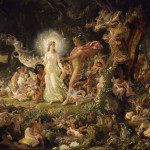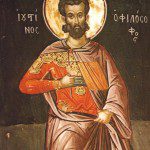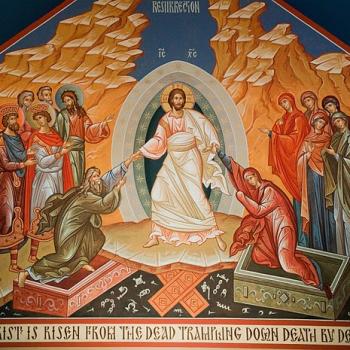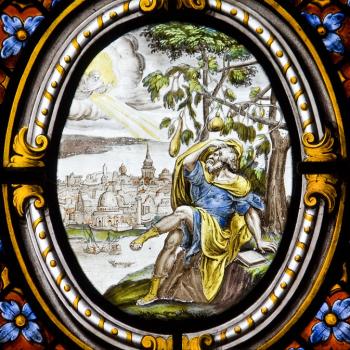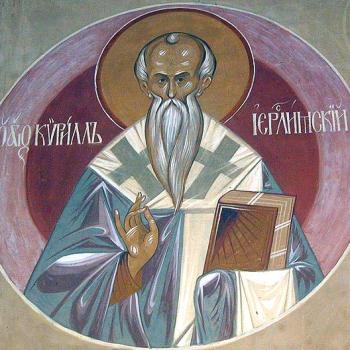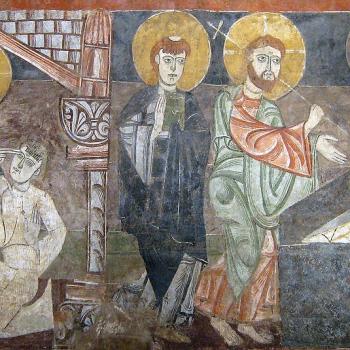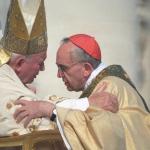![By Anonymous Russian icon painter (before 1917) Public domain image (according to PD-RusEmpire) owned by the Tretyakov Gallery [Public domain], via Wikimedia Commons.](https://wp-media.patheos.com/blogs/sites/637/2016/05/DormitionIcon-250x300.jpg)
Let us now look in brief at the Assumption of Mary by exploring a few points as to what the teaching means as well as its significance, so that we can better appreciate what makes it worthy of being a dogma and not just some interesting theological side-note.
First, and usually the most understood element of the teaching, is that it is indicative of Mary being taken up into glory at the end of her life. The reason why she is said to have been assumed into heaven instead of ascended into heaven is to point out the distinction between the glory she received and the glory which Jesus had in and of himself. For she needed help, she needed deifying grace, to be glorified in heaven. Jesus, on the other hand, ascended by his own power, demonstrating that the glory was his by nature and not just as a gift of grace.
Second, and related in part to the first, her assumption is to be seen as a sign of the universal resurrection. That is, she shows us the glory which is to be had for humanity – that humanity can and will be taken up into glory. Without her as our exemplar, this could have been put in doubt; Jesus ascended because it was natural for him; would we also receive such glory? Mary’s assumption tells us the answer. She is the exemplar of humanity and in and through her assumption, she is resurrected from the dead and shows us the glory of eternal life. Likewise, by having her body taken into heaven, her assumption demonstrates that such glory will be holistic and will include our bodies. In this way, it helps counter any misinterpretation of the resurrection which views it as a description of being pure spirit without a body, because if that were her case, there would be no need for her body to be taken into heaven.[1]
Third, it connects to the way the Mosaic Ark of the Covenant is seen as a type of Mary. Before the Ark was brought into the Temple, into full glory, it had a glory of its own in the tabernacle. What happened with the Ark and the tabernacle and the Temple were all foreshadows of the greater and everlasting Covenant of Christ, as the author of the book of Hebrews indicated:
For every high priest is appointed to offer gifts and sacrifices; hence it is necessary for this priest also to have something to offer. Now if he were on earth, he would not be a priest at all, since there are priests who offer gifts according to the law. They serve a copy and shadow of the heavenly sanctuary; for when Moses was about to erect the tent, he was instructed by God, saying, “See that you make everything according to the pattern which was shown you on the mountain.” But as it is, Christ has obtained a ministry which is as much more excellent than the old as the covenant he mediates is better, since it is enacted on better promises (Heb. 8:2-6 RSV).
In this manner, by seeing and understanding Mary’s relationship with the Ark of the Covenant, we can appreciate Mary’s assumption into heaven parallels the Ark’s entrance into the Temple. Her assumption was prophetically represented by Israel’s history in the way that history is best to be read, as a typology which points to the work and accomplishment of Christ.
And fourthly, the assumption continues to point to Jesus because it is a demonstration of his own glory. His flesh and blood came directly from Mary; he assumed flesh from her and made it his own. There is a special relationship and unity between him and Mary because of the unique way he was born. Jesus can be seen as having already begun the process of her assumption when he ascended into heaven, while he finished it at her death. In this way, his flesh and blood is completely rendered into glory.
This glorification of Mary finds support in Scripture. We need only to turn to the Apocalypse and read:
And a great portent appeared in heaven, a woman clothed with the sun, with the moon under her feet, and on her head a crown of twelve stars; she was with child and she cried out in her pangs of birth, in anguish for delivery (Rev. 12:1-2 RSV).
As with all symbolic references in Scripture, it should not be surprising that interpretations of who and what this woman represents vary according to interpreter. For example, some see her as the personification of Israel, and others, the Church.[2] These interpretations, far from contradicting the Marian understanding of the sign, exemplify it because Israel and the Church both find themselves properly understood in Mary. She is the fulfillment of Israel because in her God’s plan for Israel has been accomplished, and so she in her person can be seen as the personification of Israel. Similarly, she represents the personification of the Church because the Church, the Body of Christ, comes out of and from her. This is why, when the Apocalypse is read, the woman can be seen as Mary, Israel, and the Church, without any conflict. She who is the glory of Israel is revealed in glory, representing in and through her the glory which comes to Israel and the Church. And so it should come to no surprise that the earliest complete Greek commentary we have on the Apocalypse, written by Oecumenius, sees the sign in heaven to be Marian:
He is speaking of the mother of our Savior; as I have said. Naturally the vision describes her as being in heaven and not on the earth, as pure in soul and body, as equal to an angel, as a citizen of heaven, as one who came to effect the incarnation of God who dwells in heaven (“for,” he says, “heaven is my throne”), and as one who has nothing in common with the world and the evils in it, but wholly sublime, wholly worthy of heaven, even though she sprang from our mortal nature and being.[3]
Mary is seen in the heavens. Mary, the Woman, the Second Eve, Daughter Zion, and the Bride of Christ, is crowned with stars, indicative of her and her place in eternity. She was taken into the heavens and has become a sign for all of us, a sign of the resurrection we all shall experience. She participates in the resurrection, in the glorification we are to have in theosis, now and forever. What we hope for is real; it is a gift God gives to those who open themselves up to his love, as Evdokimov explained with his typical insight:
She is the first to pass through death, which has been rendered powerless; and this is why the Canon read at the moment of death of every believer is addressed to her motherly protection. “In your Falling-asleep, you have not forsaken the world,” the Church sings on the feast of the Dormition (Assumption), for in her the world has already become “a new creation.” On the archetypal level of holiness, of the human realized, the human hypostasis of the Theotokos corresponds to the divine hypostasis of Christ. Iconography explains this by putting two icons side by side, in a synoptic vision, the Ascension of Christ and the Assumption of the Virgin, God made man, and the human person being made god – an illustration of the most forceful patristic saying: “God became man so that man might become God.” One liturgical text emphasizes this very successfully: “Rejoice, Crown of Dogmas,” “Holy book in whom the Word is written by the hand of the Father” (Akathist Hymn). The Virgin is the living dogma, the truth of creation realized. The Assumption closes the gates of death.[4]
Mary, the woman, was seen in the heavens; her glory is one which she received from Christ, from being the mother of God. This is why the Apocalyptic sign of her glory she is shown with her son, not apart from him; she is seen giving birth to the God-man and from that privilege she then is the first to share in the glory of the resurrection.
[1] It was a point that the then Cardinal Ratzinger made in his work, Daughter Zion. See Joseph Raztinger, Daughter Zion. trans. John M. McDermott, S. J. (San Francisco: Ignatius Press, 1983), 75-8 for his own exploration of this theme. But if she did not die, then how could she be a sign of the resurrection, since she would not have experienced it herself?
[2] And we even see authors indicating the sign to be representative of the union of Israel and the Church. We see in Victorinus of Petovium: “This is the ancient church of the patriarchs and the prophets and the holy apostles. For they experience the groans and torments of their desire until that which was long promised was fulfilled out of their own people and according to their own flesh. That the woman was ‘clothed with the sun’ signifies the hope of the resurrection and the promise of glory,” Victorinus of Petovium, “Commentary on the Apocalypse” in Ancient Christian Texts: Latin Commentaries on Revelation. trans. William C. Weinrich (Downers Grove, IL: IVP Academic, 2011), 16. This combination should not be surprising because Israel is generally seen as the “church of the Old Covenant,” which finds its life continuing in and through the work of Jesus, who transformed it so it was able to fulfill its universal purpose.
[3] Oecumenius, Commentary on the Apocalypse. trans. John N. Suggit (Washington, DC: Catholic University of America Press, 2006), 107.
[4] Paul Evdokimov, Woman and the Salvation of the World. trans. Anthony P. Gythiel (Crestwood, NY: St Vladimir’s Seminary Press, 1994), 214.
Stay in touch! Like A Little Bit of Nothing on Facebook:
A Little Bit of Nothing


